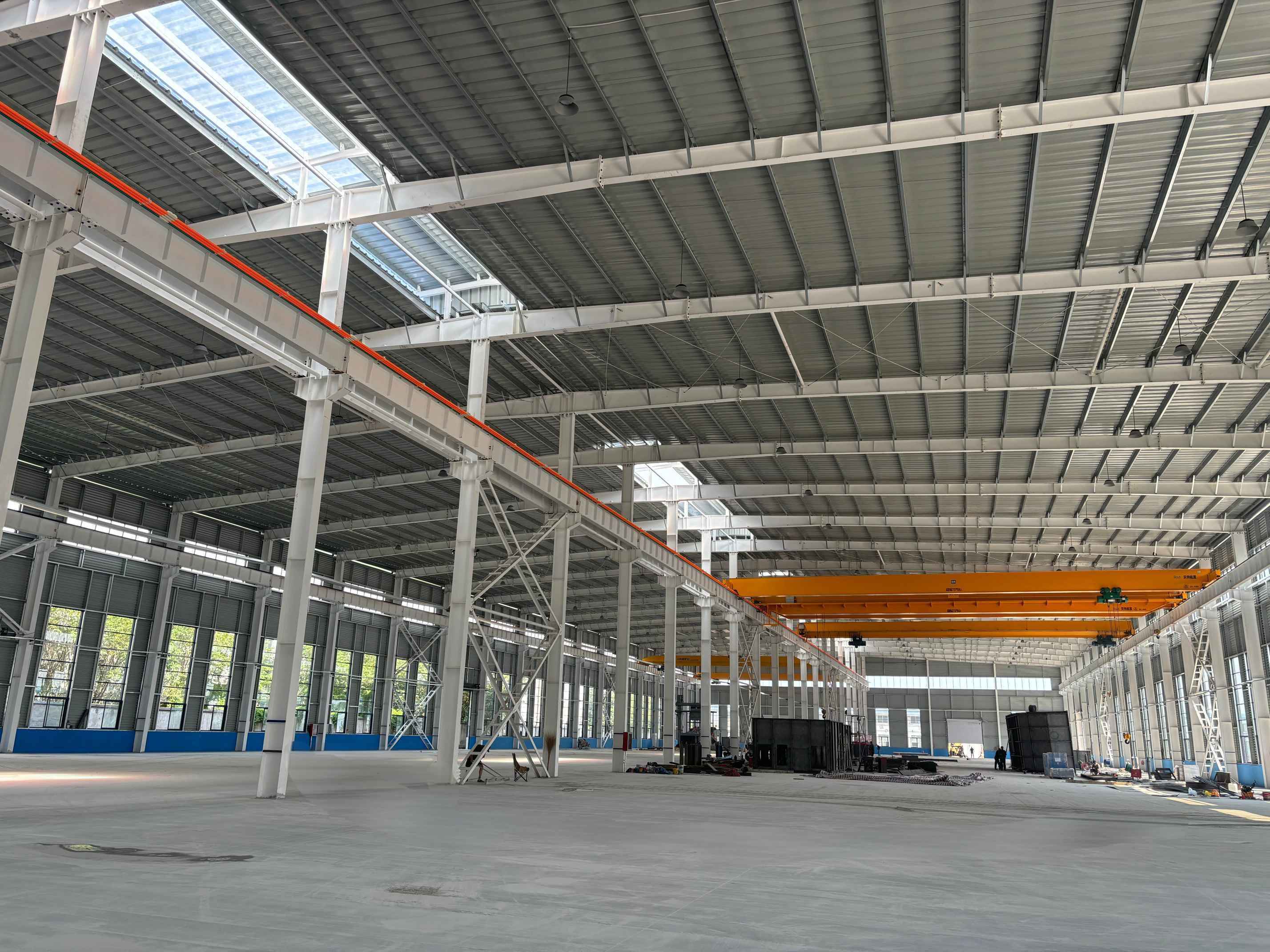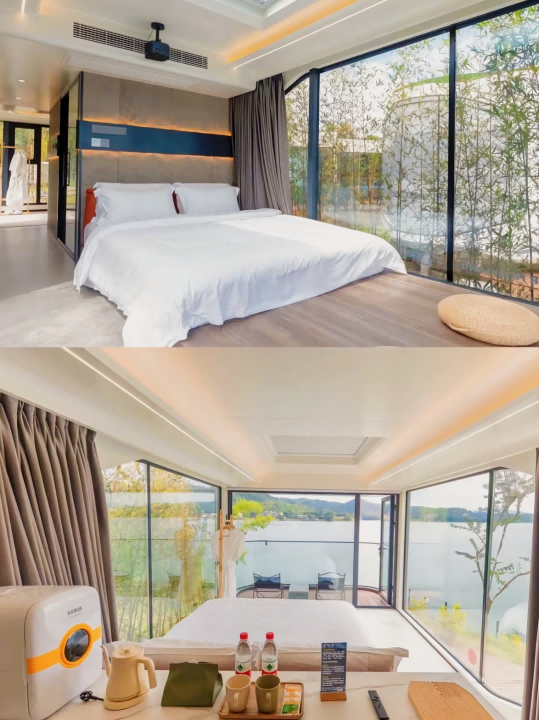Information Details
Issues to note in the design of large-span steel structures
Published Time:
2021-11-05 16:21
There are many types of steel structures in large-span steel structures, classified according to different methods. According to the force transmission method of steel structures, large-span steel structures can be divided into planar steel structures and spatial steel structures; planar steel structures can be divided into truss steel structures, arches and steel cables, and various prestressed steel structures generated by steel bracing rods; spatial steel structures can be divided into thin-shell steel structures, spherical reticulated steel structures, reticulated shell steel structures, and various prestressed steel structures. Classification is based on the selection of basic prefabricated components or modules that constitute the structure, namely plate-shell modules, beam modules, rod elements, cable modules, and membrane modules.
Calculation Standards for Large-Span Steel Structures
1. Pay attention to the selection of steel structure types. Design personnel should select suitable steel structure systems based on the project conditions such as steel structure investment, design, topography, socioeconomic benefits, and functional requirements. The support method of the steel structure should match the bearing capacity characteristics of the steel structure. The support solution should provide longitudinal restraint and necessary horizontal restraint for steel structures dominated by overall bending, reliable horizontal restraint for structures dominated by overall force, reliable anchoring for steel structures dominated by overall tension, and a reliable horizontal formwork support system for planar steel structures.
2. Pay attention to the analysis method. When analyzing spherical reticulated shells and double-layer reticulated shells, it can be assumed that the joints are fixed, and the components only bear axial forces, using a rod element model; when analyzing single-layer reticulated shells, the joints should be assumed to be rigid, and the components bear axial forces, bending moments, and shear stresses, using a beam element model. When simulating steel wires and steel bracing rods in the model as flexible prefabricated components, the calculation models of various components should be able to reflect the load conditions of the steel structure.
When designing large-span steel structures, the influence of the underlying supporting steel structure should be considered. Especially under the effects of temperature and seismic loads, the influence of the bending stiffness of the underlying supporting structure should be considered. When considering the influence of the steel structure, simplified methods can be used to simulate the bending stiffness of the underlying steel structure. If necessary, a layout model composed of the upper large-span steel structure and the underlying supporting structure should be used for analysis.
3. Pay attention to temperature deformation and wind loads.
a. Temperature has a significant impact on the design of prefabricated components and rubber bearings in large-span steel structures, and stress analysis cannot be ignored.
b. Pay attention to wind loads. Wind loads have a significant impact on large-span steel structures and may become the controlling load of the steel structure. Therefore, impact analysis of the steel structure should be emphasized.
c. Pay attention to the influence of rubber bearing deformation on large-span steel structures. Settlement of rubber bearings will cause large additional bending moments, horizontal thrusts, and longitudinal shear stresses in large-span steel structures. The calculation of prestressed steel structures should include the determination of the initial prestress condition and the calculation of the load conditions. The determination of the initial prestress condition and the load condition analysis should consider the influence of geometric nonlinearity.
4. Pay attention to the reliability analysis of steel structures. The reliability of steel structures may become a control factor in structural design, so geometric nonlinear stability analysis of large-span steel structures is required.
5. Pay attention to the combined effect of seismic action. When the seismic effect of large-span steel structures is combined with other load effects, the vertical seismic effect and horizontal seismic effect should be calculated simultaneously, and the combination dominated by vertical seismic effect should be included.
6. Pay attention to the comfort of steel structures. When large-span steel structures are used for roof trusses, the comfort requirements should be met according to different application functions. In order to reduce the project cost, energy-dissipating shock absorption methods can be used to meet the comfort requirements of steel structures.
7. Pay attention to stress analysis during the construction stage. The internal forces of the steel structure at different stages of the construction process are different from the internal forces analyzed in the design, so the bearing capacity and reliability of the steel structure during the construction stage should be checked based on the analysis of the entire construction process.




